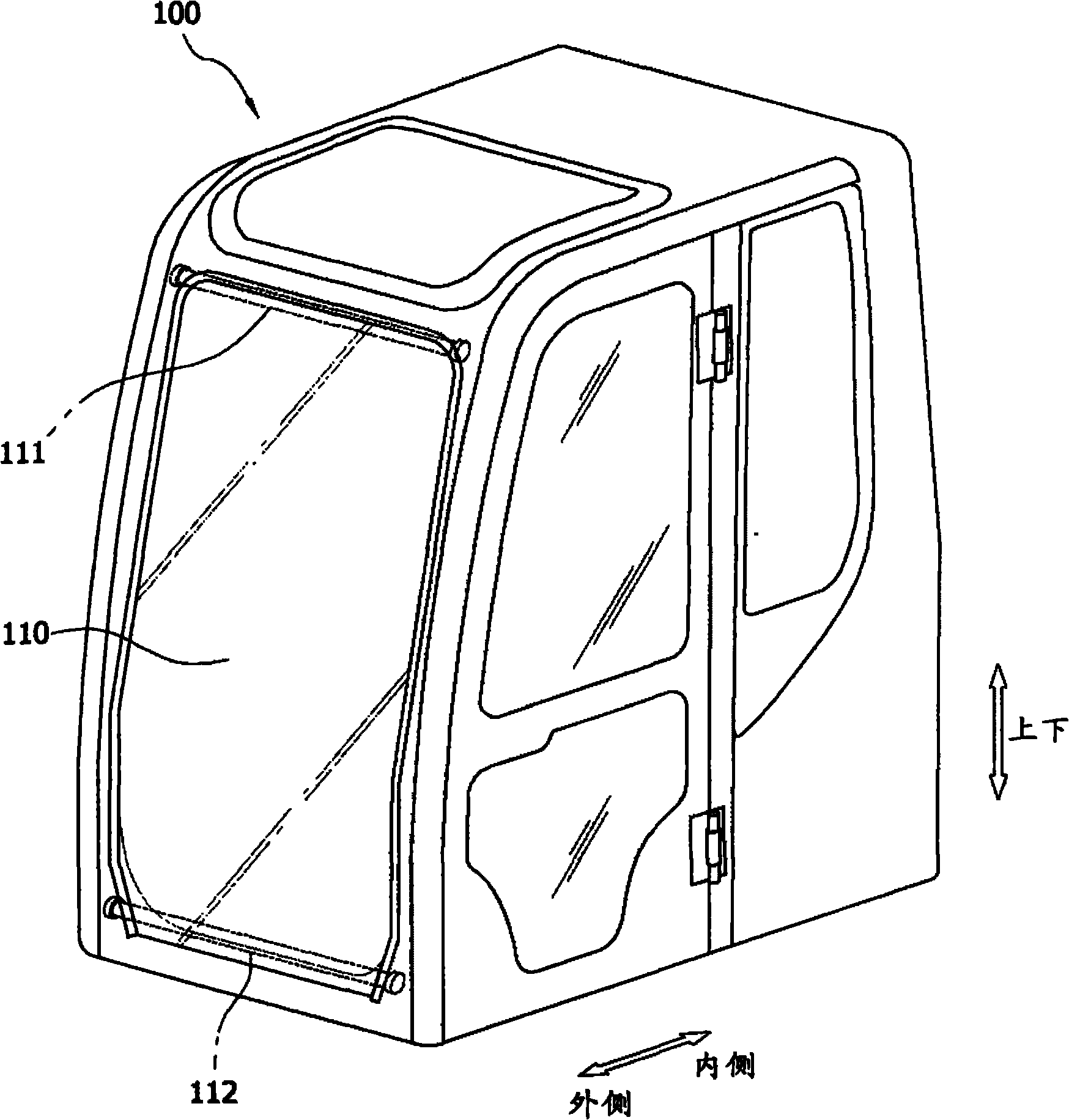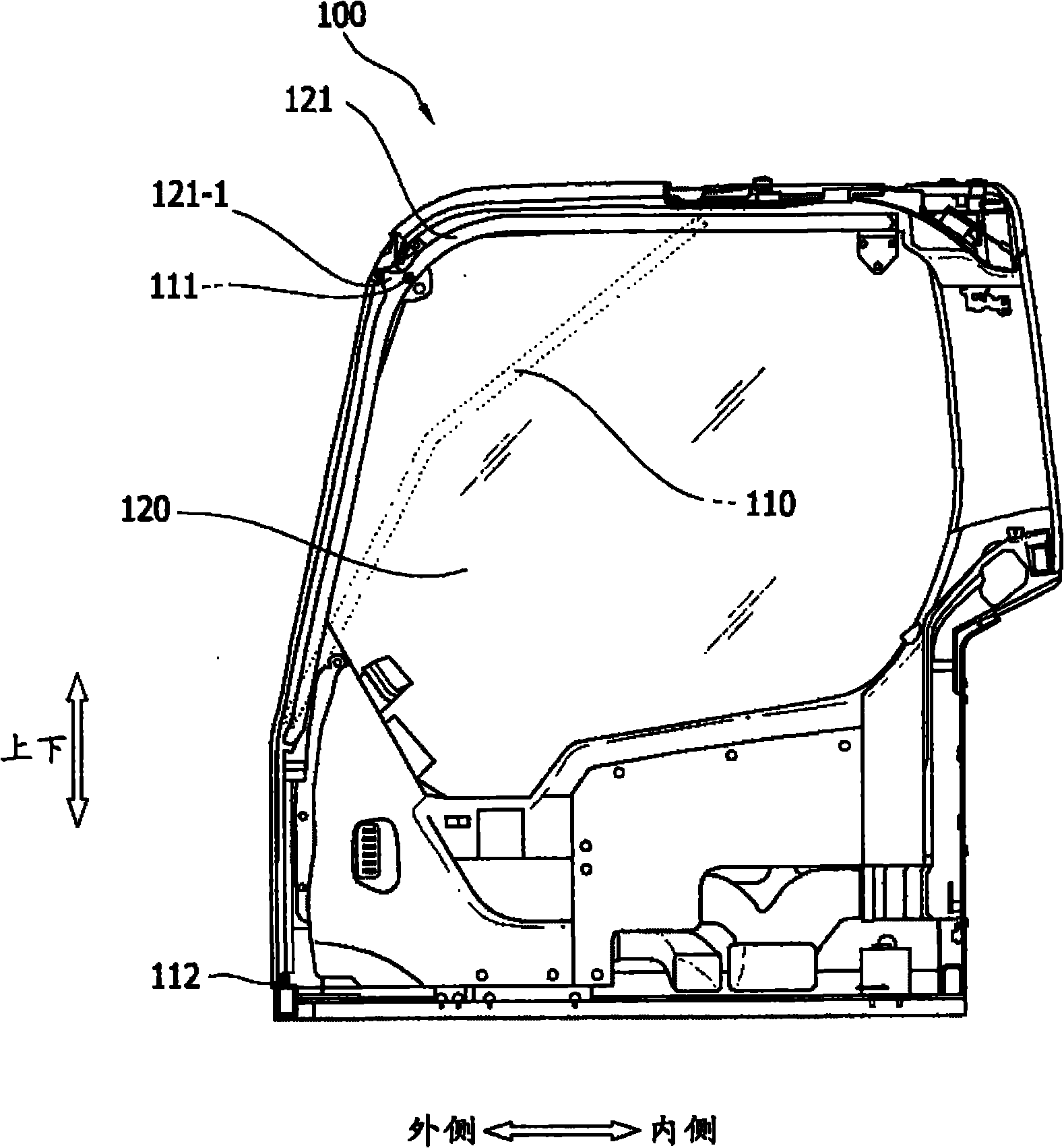Switch control device for front door of heavy engineering equipment
A technology of engineering equipment and switch control, applied in switches with brakes, application of locks, door/window fittings, etc. Safety accident, the effect of easy opening and closing of the front door
- Summary
- Abstract
- Description
- Claims
- Application Information
AI Technical Summary
Problems solved by technology
Method used
Image
Examples
Embodiment Construction
[0024] Generally speaking, heavy engineering equipment is also called civil machinery, which includes excavators, wheel loaders, forklifts, skid steer loaders, etc., and there are many types. Unmanned equipment can also be considered for heavy-duty engineering equipment, but most of the equipment currently in use adopts the way that operators can directly board and carry out engineering. Advantages of variable conditions.
[0025] Take an excavator as an example. Excavators are civil machinery used to excavate sand or rocks. They are used for homestead construction, road and sewer engineering, river reconstruction and water retaining engineering, tunnel and subway foundation engineering, mud and rock mining operations, forest land reclamation engineering, sand Equipment for various operations such as soil loading operations. Such an excavator may include: an undercarriage driven by crawlers or wheels; an upper revolving body provided with a driver's cab which is rotatably co...
PUM
 Login to View More
Login to View More Abstract
Description
Claims
Application Information
 Login to View More
Login to View More - R&D
- Intellectual Property
- Life Sciences
- Materials
- Tech Scout
- Unparalleled Data Quality
- Higher Quality Content
- 60% Fewer Hallucinations
Browse by: Latest US Patents, China's latest patents, Technical Efficacy Thesaurus, Application Domain, Technology Topic, Popular Technical Reports.
© 2025 PatSnap. All rights reserved.Legal|Privacy policy|Modern Slavery Act Transparency Statement|Sitemap|About US| Contact US: help@patsnap.com



